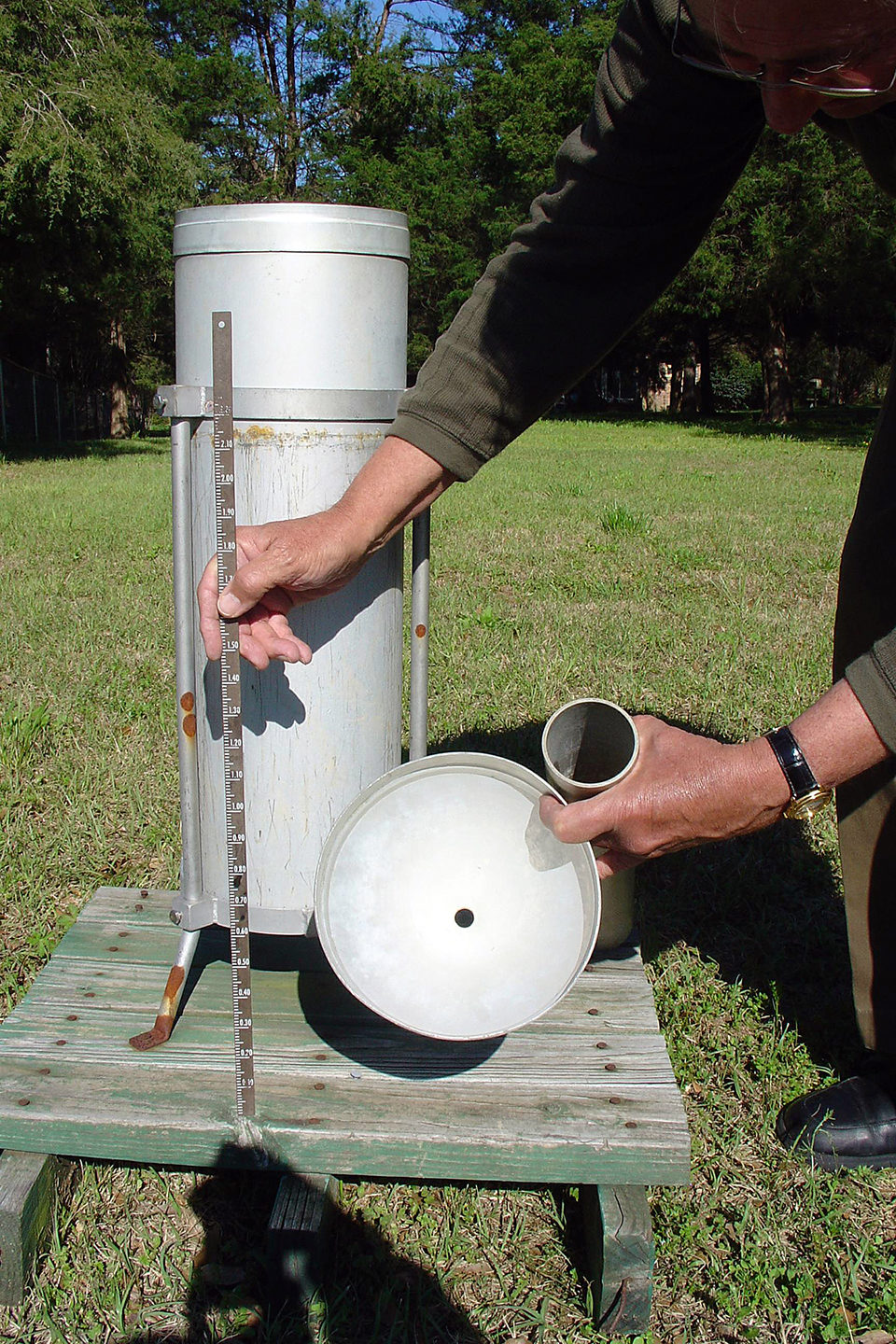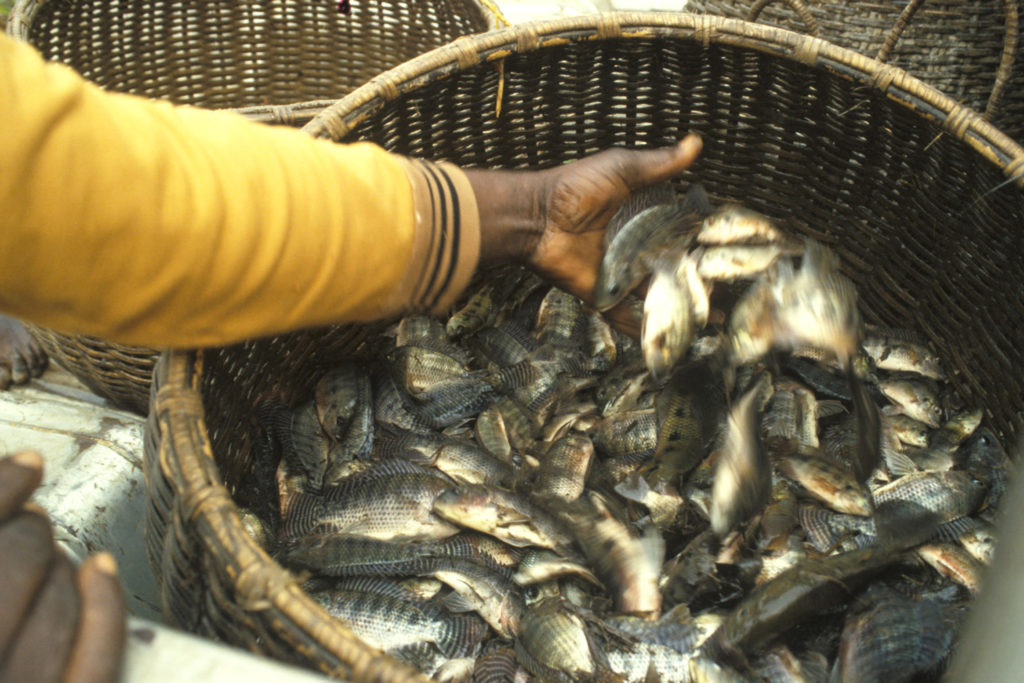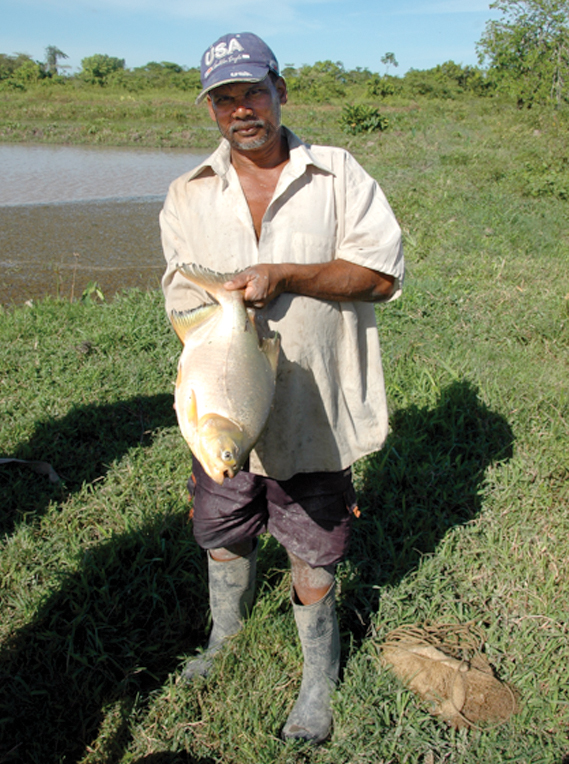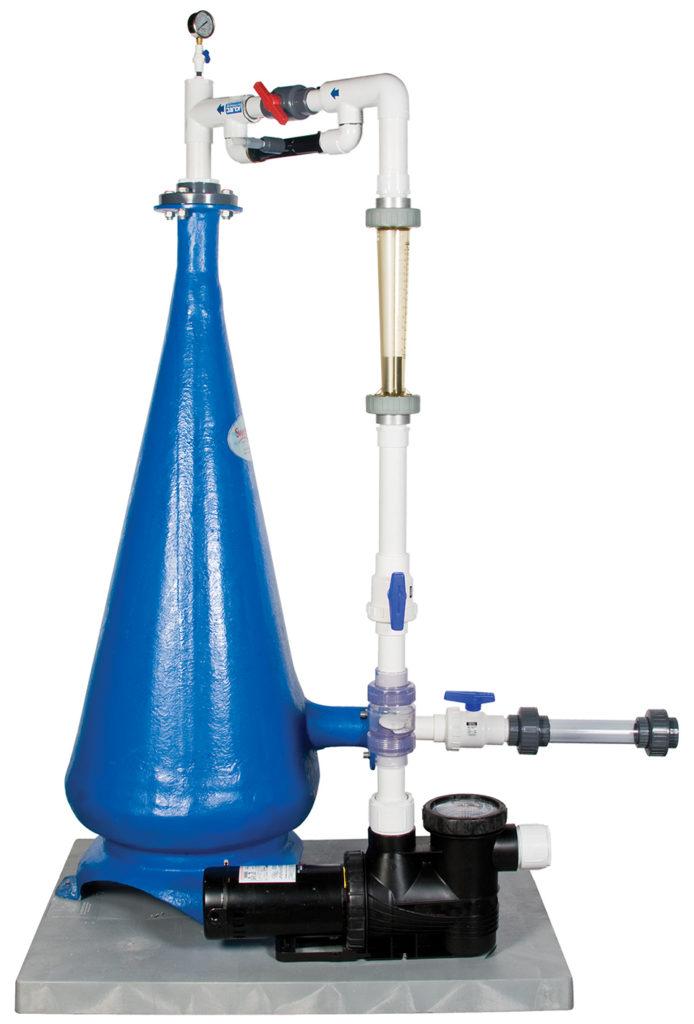Accounting for rainfall, runoff, evaporation and seepage

As aquaculture technology becomes increasingly sophisticated, it is important to maintain accurate estimates of resource use. Water is the most basic resource in aquaculture, and producers sometimes need to estimate inflows, outflows and storage volumes in culture systems.
Rain gauges
Rainfall is a major source of water to ponds, as it falls directly into them and generates runoff that enters them. Standard rain gauges are used to determine the amount of rain that falls at a particular location. Even inexpensive plastic rain gauges provide sufficient accuracy for use in aquaculture management.
Standard rain gauges consist of a cylindrical bucket containing a removable inner tube with a cross-sectional area one-tenth that of the bucket. A funnel at the top of the bucket directs rainfall into the inner tube, where a dipstick measures the depth of rain collected. Because of the larger area of the top of the funnel, rainfall is “concentrated” in the inner tube. Thus, the dipstick is calibrated so that 10 cm of length is equal to 1 cm of rainfall.
Rain gauges should be positioned in open areas away from trees or buildings by a horizontal distance at least twice the height of those objects. The tops of the gauges should be perfectly level.
Rain gauges usually are checked and emptied daily. The data normally is reported as monthly and annual totals.
Runoff
Runoff is not a factor in the embankment ponds typical of aquaculture, for their watersheds are restricted to the inside slopes and the tops of the embankments. Watershed ponds usually have catch areas six to 12 times greater than their water surface areas. It is difficult to estimate runoff, for it varies with topography, vegetative cover, soil type and moisture content, season, rainstorm characteristics, and other factors. However, on an annual basis, runoff amounts are usually 25 to 40 percent of rainfall totals.
Evaporation
Evaporation rates can be measured with evaporation pans. Standard, class A evaporation pans are made of stainless steel 120 cm in diameter and 25 cm deep. They are filled within 5 cm of the top with clear water and placed on a level platform above the ground in an open, grassy area.
A stilling well and hook gauge measure the evaporation loss from day to day. A rain gauge should be placed nearby to correct for rain falling into the pan. Water must occasionally be added to the pan to restore its level. Like rainfall, pan evaporation is measured daily, with monthly and annual totals reported.
Spatial variation in evaporation is not nearly as great as for rainfall. Therefore, evaporation data from a weather station in the general area of an aquaculture facility can be used in place of data measured on site.
Evaporation from lake surfaces has been reported to equal 0.7 times pan evaporation. Ponds tend to heat faster than large lakes, which causes greater evaporation. A study at Auburn University found that a factor of 0.81 times pan evaporation provided the best estimate of evaporation from pond surfaces.
Seepage
Seepage from ponds is a complex variable for which accurate, direct measurements are impossible. It is possible, however, to obtain indirect estimates of seepage.
A staff gauge or meter stick can be mounted vertically in a pond to read changes in the water depth. During periods when there is no rainfall and water is not added to or discharged from the pond, water level declines must equal seepage plus evaporation. Pan evaporation measurements during the period of water loss can help estimate the portion of the decrease in water level that resulted from seepage.
Calculating volume
Data for rainfall, runoff, evaporation, and seepage often are given in depth units. Such values are easily converted to volumes. For example, consider a 10-ha embankment pond in an area where rainfall is 1,400 millimeters per year and pond evaporation is 1,012 millimeters per year. The annual input of rainfall to the pond would be 1.4 meters, 10 ha 10,000 square meters per hectare = 140,000 cubic meters, and evaporation loss would be 1.012 meters, 10 ha 10,000 square meters per hectare = 101,200 cubic meters. If seepage is 0.25 centimeters per day, the annual seepage loss would be 0.0025 milligrams per day 365 days per year 10 ha 10,000 cubic meters per hectare = 91,250 cubic meters.
In the above example, the annual rainfall inflow to the pond was less than the annual outflow in evaporation and seepage. Because embankment ponds receive negligible run-off, water from an external source would be necessary. Assuming the pond is 1 meter in average depth, 100,000 cubic meters of water would initially fill it. To maintain the water level at a constant 1-meter depth for a year, 52,450 cubic meters would be needed to make up the difference between seepage plus evaporation and rainfall.
The inflow of water from a pump can be estimated from pump discharge and the hours of operation. In our example, suppose a pump that discharges 2.0 cubic meters water per minute is used to supply water to the pond. Filling the pond would take about 83.3 hours of operation. To maintain the pond’s water level, the pump would only need to operate 71.8 minutes per day.
(Editor’s Note: This article was originally published in the August 2005 print edition of the Global Aquaculture Advocate.)
Now that you've reached the end of the article ...
… please consider supporting GSA’s mission to advance responsible seafood practices through education, advocacy and third-party assurances. The Advocate aims to document the evolution of responsible seafood practices and share the expansive knowledge of our vast network of contributors.
By becoming a Global Seafood Alliance member, you’re ensuring that all of the pre-competitive work we do through member benefits, resources and events can continue. Individual membership costs just $50 a year.
Not a GSA member? Join us.
Author
-

Claude E. Boyd, Ph.D.
Department of Fisheries and Allied Aquacultures
Auburn University
Alabama 36849 USA[117,100,101,46,110,114,117,98,117,97,64,49,101,99,100,121,111,98]
Tagged With
Related Posts

Health & Welfare
10 paths to low productivity and profitability with tilapia in sub-Saharan Africa
Tilapia culture in sub-Saharan Africa suffers from low productivity and profitability. A comprehensive management approach is needed to address the root causes.

Responsibility
A helping hand to lend: UK aquaculture seeks to broaden its horizons
Aquaculture is an essential contributor to the world food security challenge, and every stakeholder has a role to play in the sector’s evolution, delegates were told at the recent Aquaculture’s Global Outlook: Embracing Internationality seminar in Edinburgh, Scotland.

Health & Welfare
A look at aquaculture in Guyana
With its large quantities of water and little industry to pollute it, Guyana has the potential to become a greater player in global aquaculture.

Responsibility
A look at unit processes in RAS systems
The ability to maintain adequate oxygen levels can be a limiting factor in carrying capacities for RAS. The amount of oxygen required is largely dictated by the feed rate and length of time waste solids remain within the systems.

